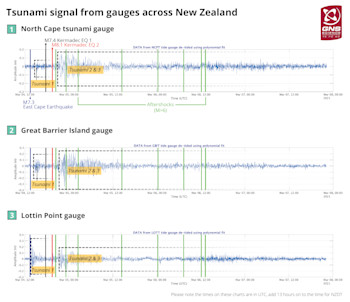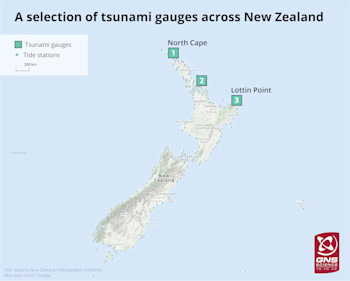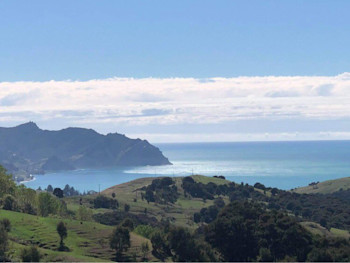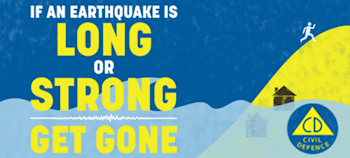
Friday 5 March Tsunami: What happened and what did you see?
Last Friday three large earthquakes occurred offshore New Zealand –a M7.3 off East Cape at 2:30am, followed by two Kermadec quakes M7.4 and M8.1 several hours later. They all produced tsunami that overlapped and were recorded all around New Zealand.
What Happened?
Tsunamis can cause waves which can continue to arrive for many hours to days. Our instruments recorded the tsunami from the M7.3 East Cape earthquake reaching a maximum amplitude of ~30-35cm at Lottin Point (East Cape) and ~10-20cm at Great Barrier Island.
This was closely followed by tsunamis generated by the M7.4 and M8.1 Raoul Island earthquakes.
These waves overlapped to produce a tsunami between 35 and 40 cm in amplitude at the Great Barrier Island tsunami gauge and recorded at many other gauges around New Zealand.
Below are three tide gauge recordings from the North Island. They show the largest tsunami waves occurred just after the M8.1 Raoul Island earthquake. Interestingly, we can also see the activity lasted several days. It’s worth noting that tide gauges just show the tsunami heights at specific locations. Tsunami heights vary significantly along the coast so other locations may have experienced larger tsunamis.
We need your help!
There were a few photos and videos taken by members of the public of unusual wave activity following the tsunami like this image that Gina Pewhairangi took of surges arriving in Tokomaru Bay on the East Cape.
If you have noticed the sea behaving in an unusual way, or have photos or videos of this happening, we would love to see them. Please follow the link below to share them with us.
Click to access our tsunami survey
So, what’s the big deal over some little waves?
Although waves of a few cms may not sound like much, tsunami are nothing like normal wind-generated waves. In a tsunami the whole water column is moving with the tip of the iceberg being the wave on top, often surging faster than you can run (10-30km/h at the coast and travelling 400-800km/h in the open ocean). Surges come in non-stop for around 5 minutes or more, and then recede just as fast for a similar period of time, acting more like a very rapid tide than a wave. This type of back-and-forth pattern (and sometimes weird eddies) continues for several hours (if the tsunami was generated close by) to days (for tsunami that has travelled across the Pacific). For someone fishing on the rocks, that relentless surge of water might be enough to knock them off their feet and not let them back up.
As our Seismic Duty Officer John explained: "50-60cm is like trying to stand in a fast-flowing river that is about knee height, and really hard to stand in."
Aotearoa New Zealand has a long history of devastating tsunami. We are glad this was relatively small as it allowed another practice run. It is crucial that everyone who lives, works or plays in an evacuation zone is ready. Remember, Long or strong, get gone!
Want more information?
What happened and future scenarios
M7.1 East Cape Earthquake – Aftershock forecasts
How do you know a tsunami is coming? And what should you do?
History of tsunami in New Zealand and what causes them.
Remember, Long or Strong, Get Gone.
Drop, Cover and Hold during the shaking. Protect yourself from the earthquake first.
As soon as the shaking stops, move immediately to the nearest high ground, out of all tsunami evacuation zones, or as far inland as possible.
NEMA (National Emergency Management Agency) have a great website with information on what to do before, during and after a tsunami. There you can also find tsunami evacuation zone maps for around New Zealand, and what supplies you need in an emergency.
Need to Talk? If you would like support or advice, have feelings of anxiety, stress, prolonged fear, hopelessness or anger, or if you just need to talk with someone. Please text or phone 1737 to speak to a trained councellor in the National Telehealth Service. Its free to call or text.
Attributable to: Dr William Power, Senior Geophysicist, GNS Science. Dr David Burbidge, Tsunami Team Leader, GNS Science.
GNS SCIENCE MEDIA CONTACT: 021 574 541 or media@gns.cri.nz








